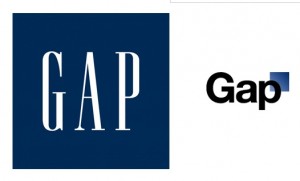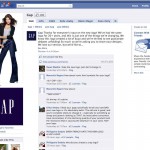Freelance creatives are familiar with the sales/marketing conflict at their client organizations: sales needs to generate business, while marketing needs to generate the maximum number of leads at the lowest possible cost. When good leads can be produced cost effectively, everybody wins. It’s an example of creative tension that produces a positive result.
But now there’s a new force to be reckoned with at many client companies: the brand guardian, who might be a product manager, an in-house creative director or some kind of special off-to-the-side position on the org chart reporting directly to the marketing VP. Unlike the sales and marketing folks, the brand manager is often not required to show measurable results. And their interference can do serious damage to your best work.
Companies have long been aware of the importance of a consistent identity, but social media has caused them to be ultra-vigilant. If you go off-brand in a way that’s tacky or politically incorrect or just counter to what your customers expect, you risk being excoriated like Gap with its new logo and Starbucks with its #RaceTogether campaign. The brand manager would appear to be a sort of flack jacket, taking a daily activist role to keep this embarrassment from happening.
The bad stuff occurs when setting and enforcing brand standards becomes a subjective process. These standards grew out of style guides and copywriting rule books, which were specific enough that they were easy to follow. You knew what colors you could and could not use, and you knew not to sound like J.C. Penney when you were writing for Neiman-Marcus.
But now, weighed down by “voice of the customer” screeds and “personas” for the various pilgrims you meet along the “buyer’s journey”, brand enforcement has gotten much broader and at the same time more arbitrary at many companies. (NOT all and certainly none of my clients—see below!) The only way you know for sure is when your hand is slapped for going off-message. And because they want to avoid this experience, many marketing managers are over cautious and will preemptively kibosh good creative because they think brand won’t like it.
Historically, good lead generation has had little to do with brand. If you want to start a conversation at a party, you don’t begin with your elevator pitch but with a statement you think will be of interest to the other person. If you’re DirectTV, a satellite provider with a huge brand investment, you trick people into opening your envelope by making it look like a personal invitation. Now that AT&T has acquired them, the difference is an AT&T logo on the back of the envelope. Brand can wait. Right now they just want to get leads.
Don’t take this the wrong way. Brand is good. I love brands. One of my favorite clients is an agency that specializes in helping companies define their brands. The damage is done when brand is apparently in conflict with good creative—something that should never happen because brand should not be “this is who we are” but “this is what we can do for you” or “this is how you feel when you use our brand”.
Brand is still about benefits, about you and not about me. But many brand managers don’t trust this. They’ll dial back powerful selling statements in favor of stilted, stuffy language that is somehow “brand-y”. This hurts your chance to win for your client by generating more customers and revenue through powerful copy. Same thing happens with graphics if you are shoehorned into a template that looks great but doesn’t follow principles of good eyeflow and doesn’t allow enough content to deliver a compelling message.
So what can you do? If possible, get an audience with the brand manager as part of your assignment. Ask them to explain why the standards are the way they are. Then, when you present the work, play back those explanations in the same way you quote from the creative brief. This gives the brand manager some skin in the game and may even win them over.
But that’s an ideal situation. At some companies the brand manager may refuse to even talk to you. They may argue there’s no need because the brand standards are already laid out. It’s obvious they’re being defensive—but the very reason you need to talk about standards is to be sure you interpret them correctly.
A brand needs to listen to its customers. It needs to evolve. Marketing is a key part of that conversation. As my sales training client Roy Chitwood says, “nothing happens till somebody sells something”. When a brand manager shuts you out of that conversation, everybody loses.
This post was inspired by conversations at my “Devilish Details” Ignite Session at the 2015 DMA conference, where over 100 creatives shared examples of good ideas gone bad. It has no bearing on any of my own clients, past, present or future.

